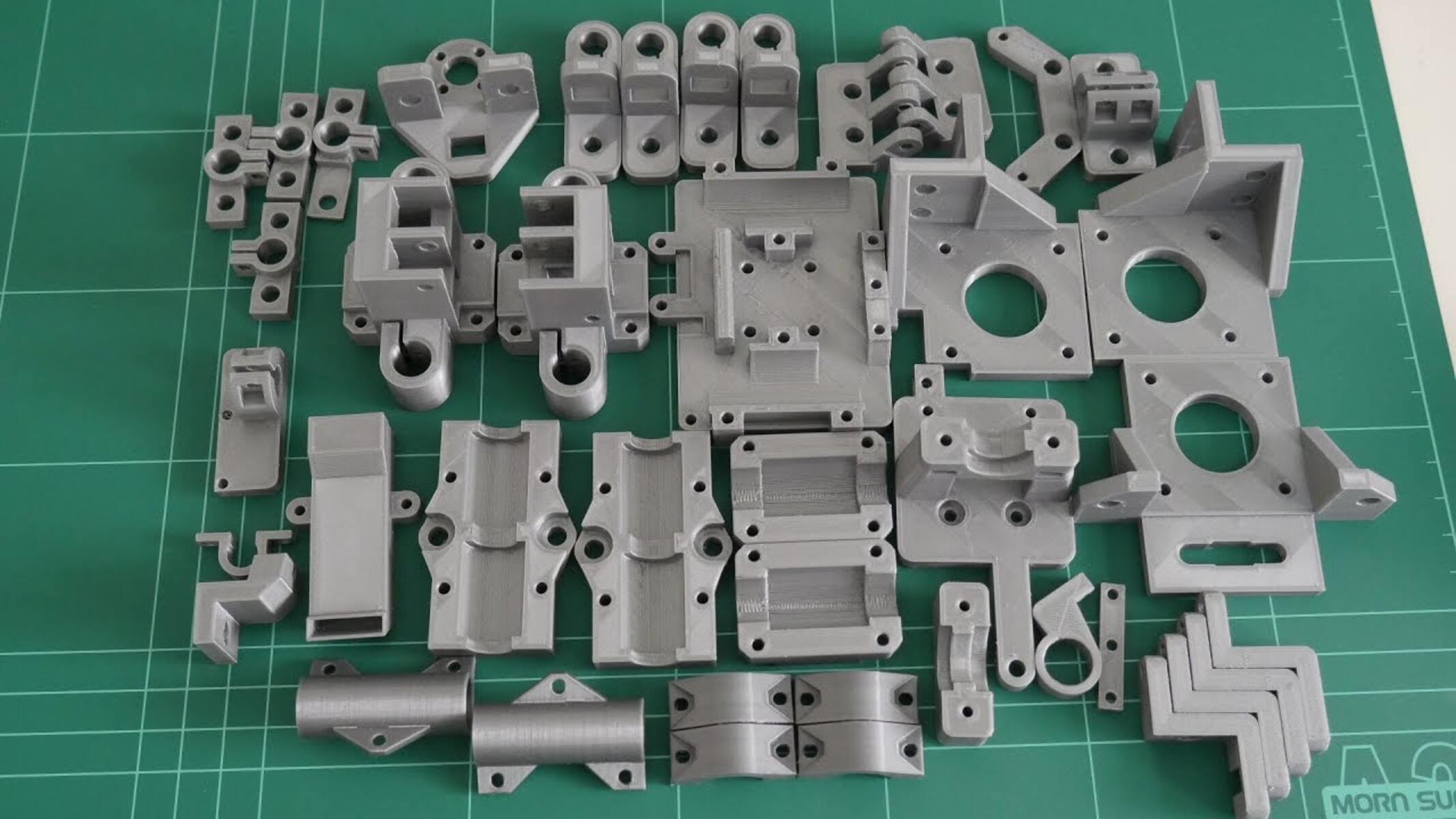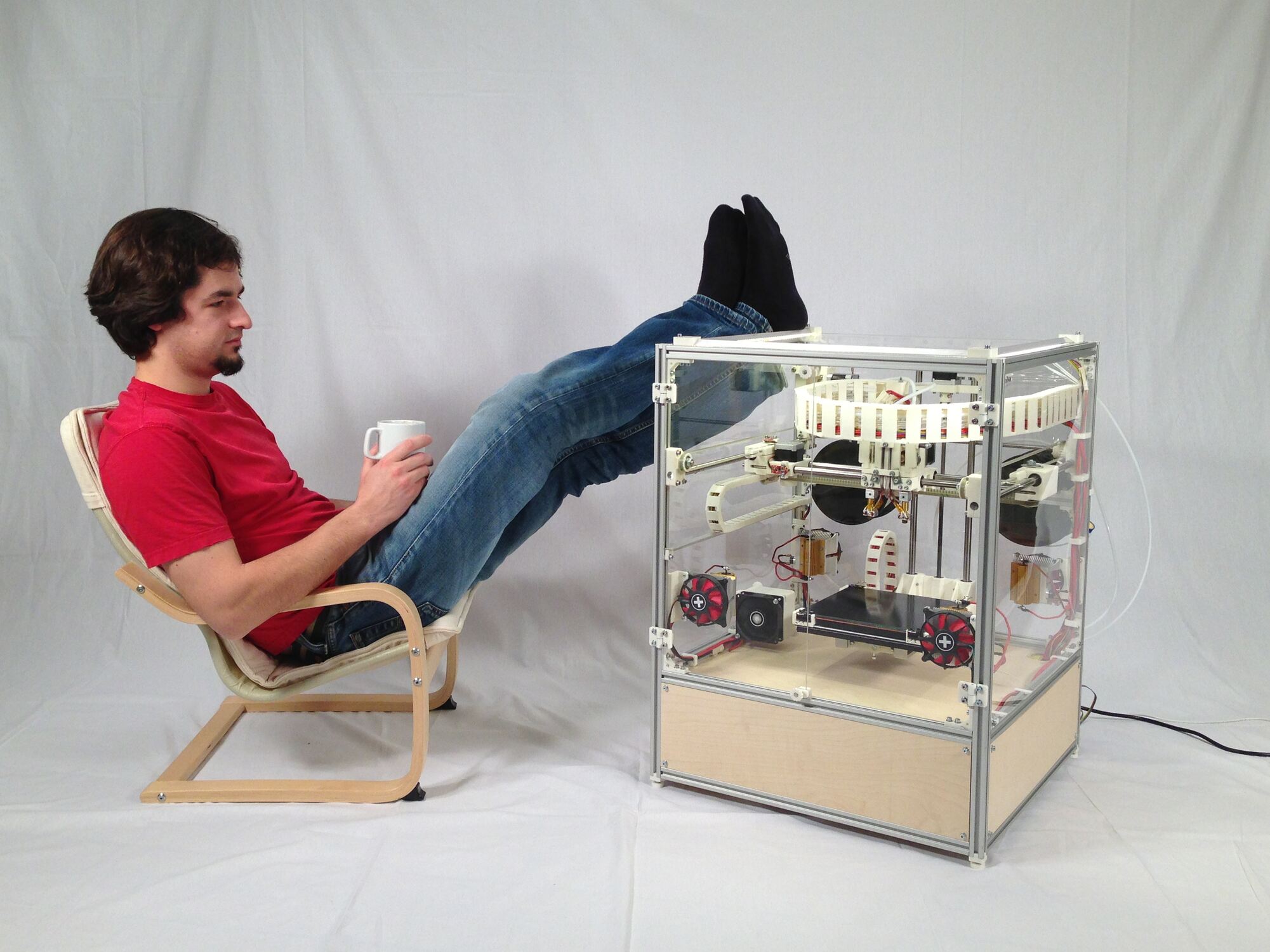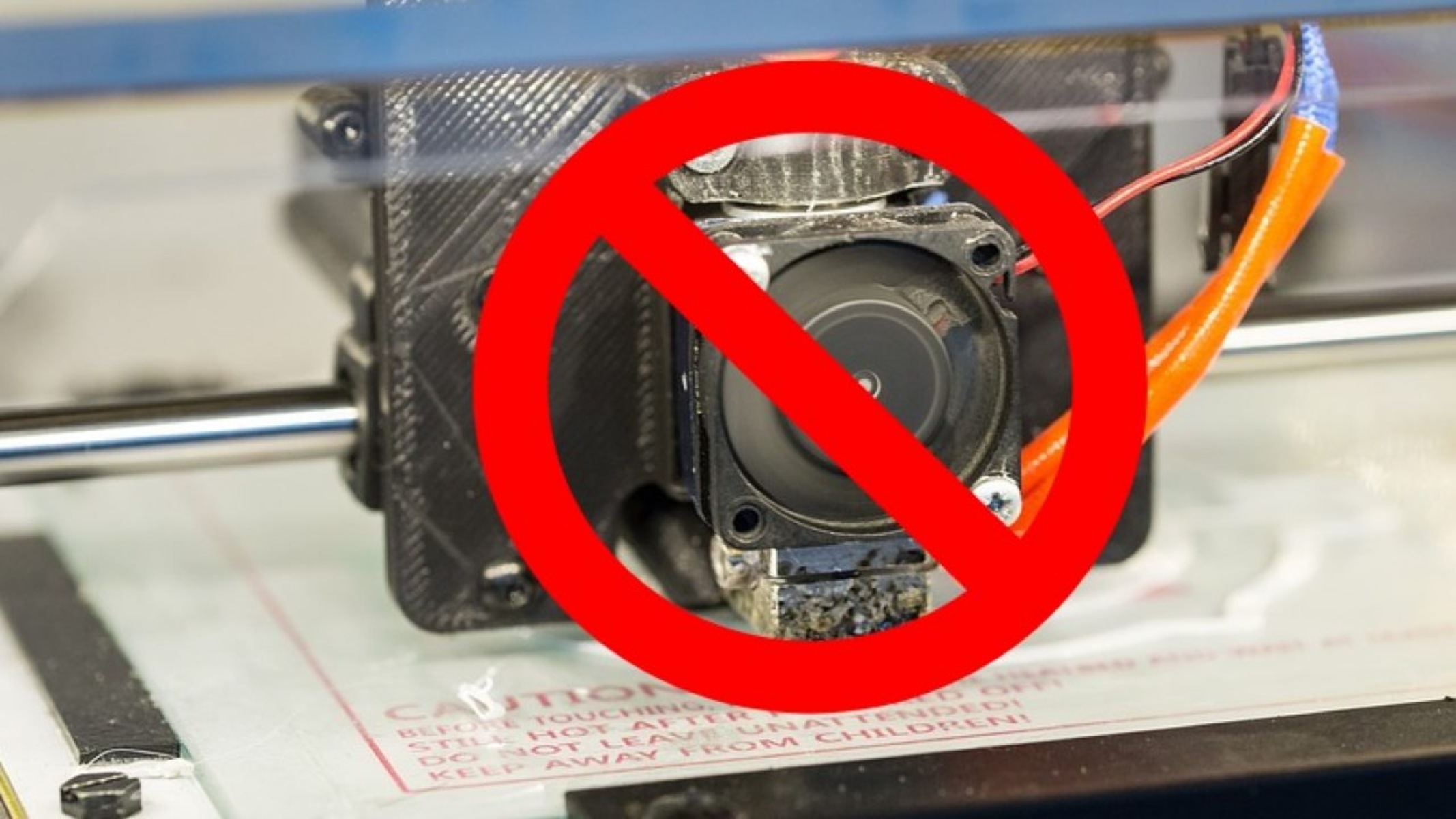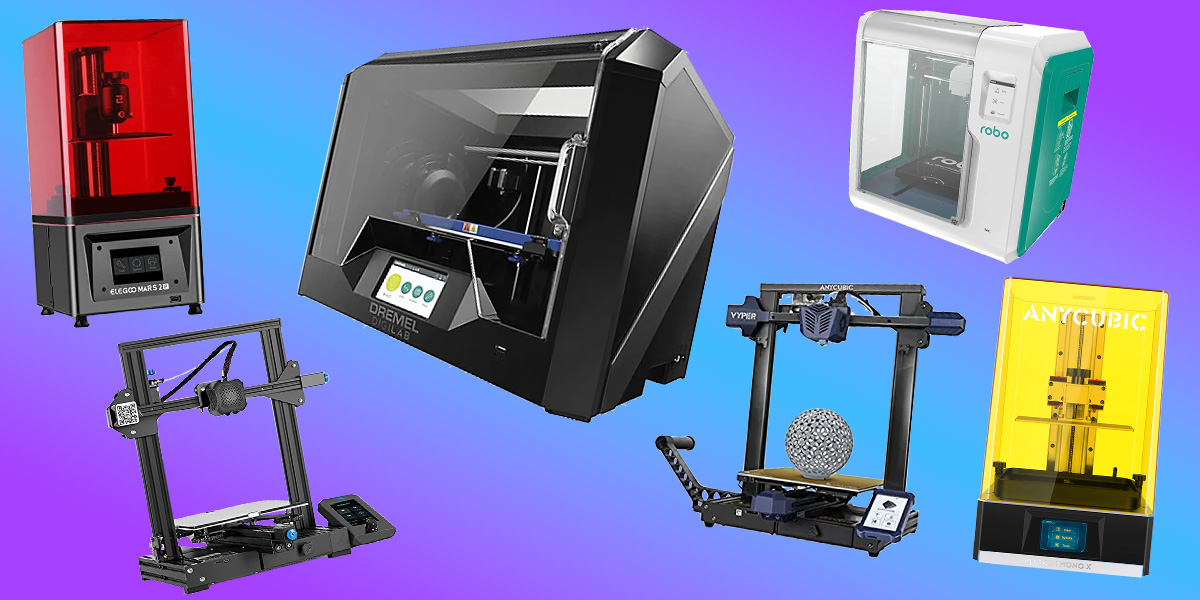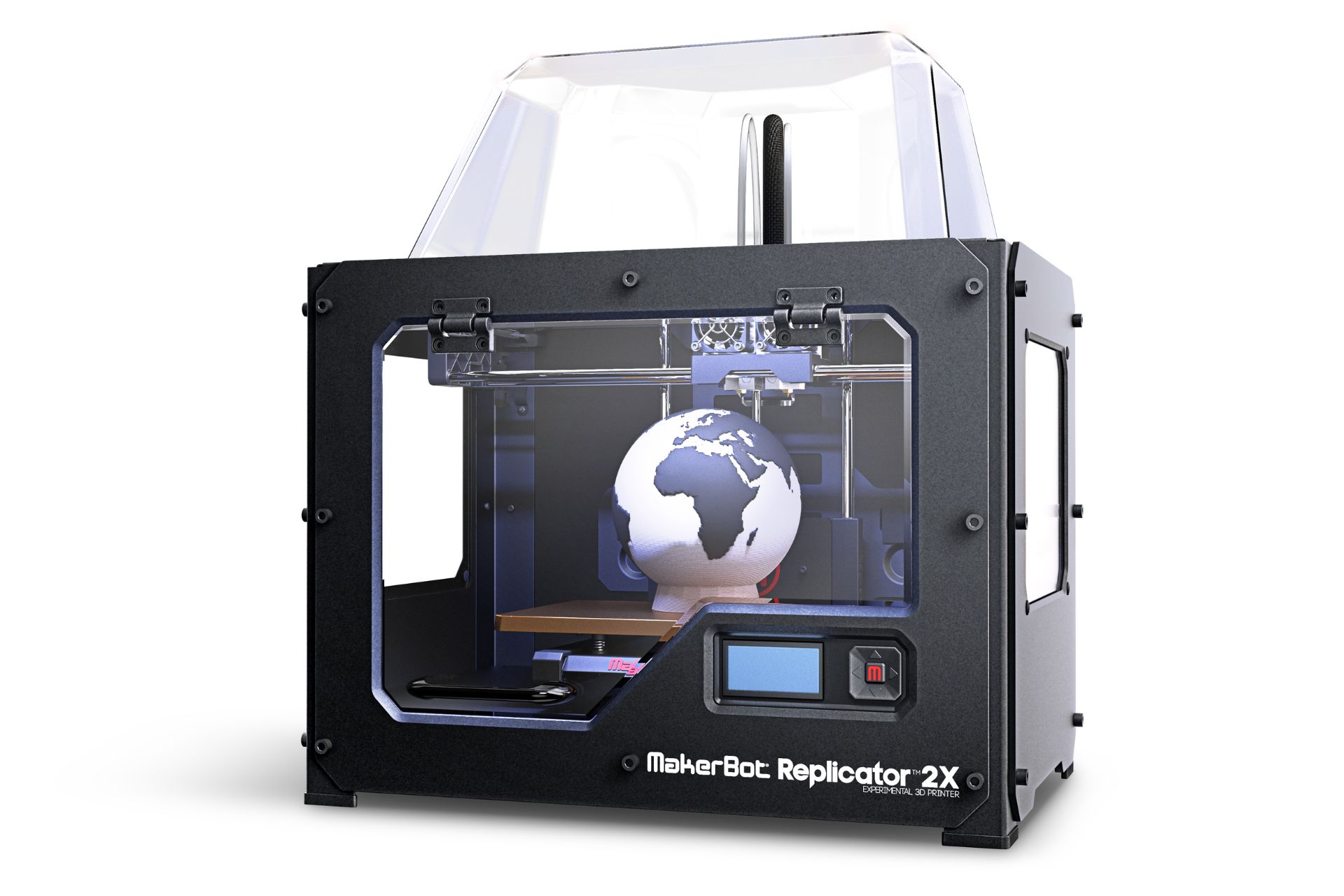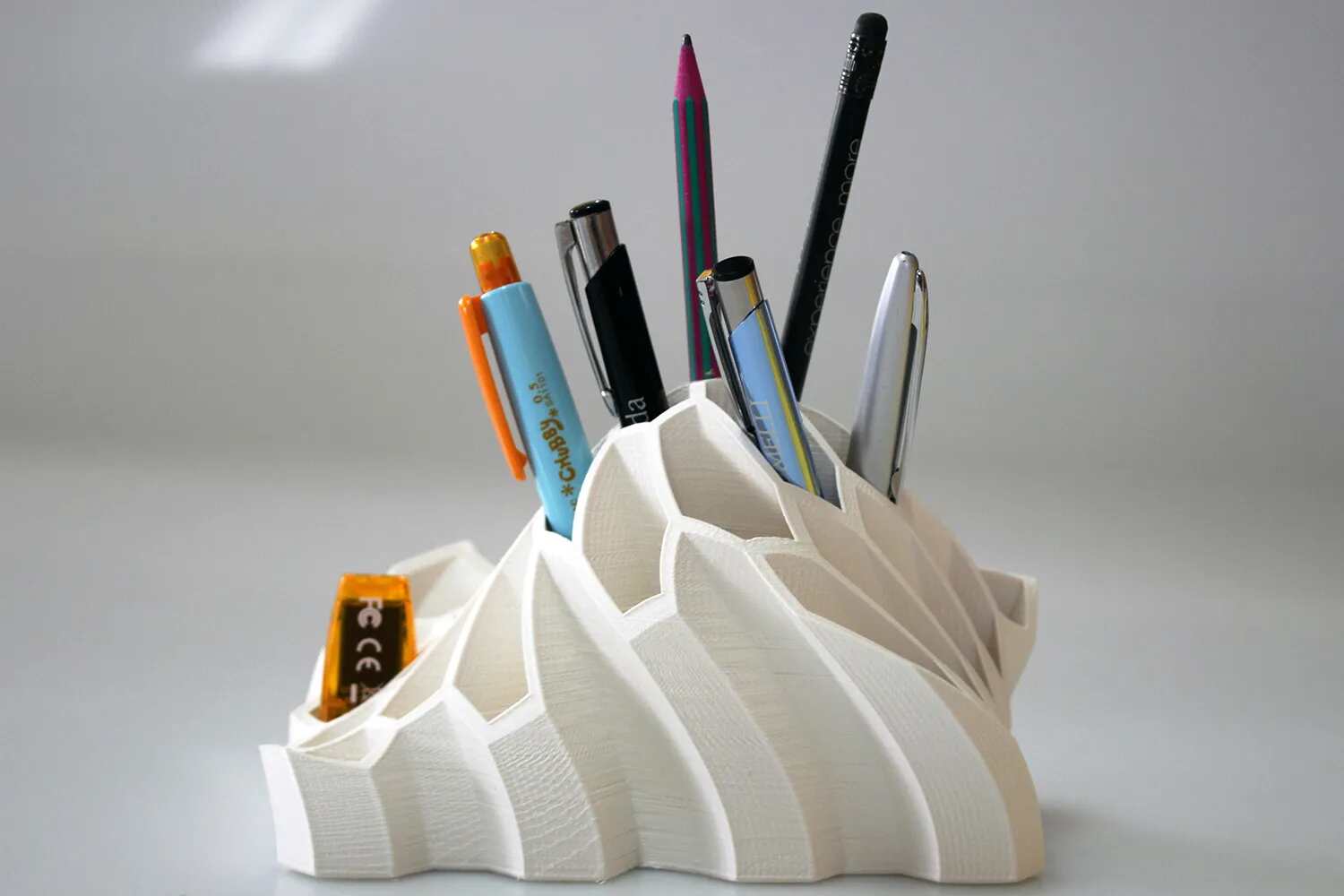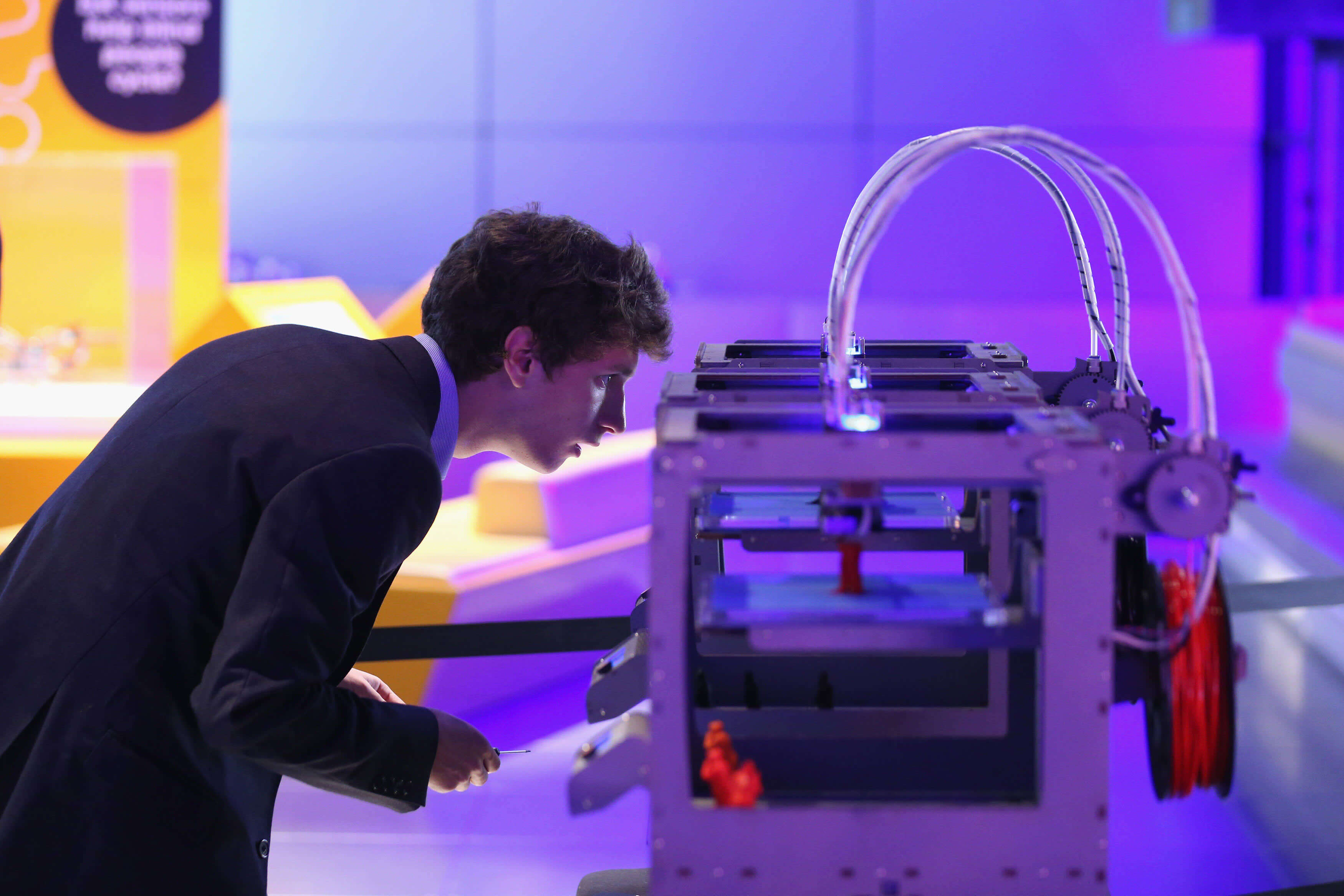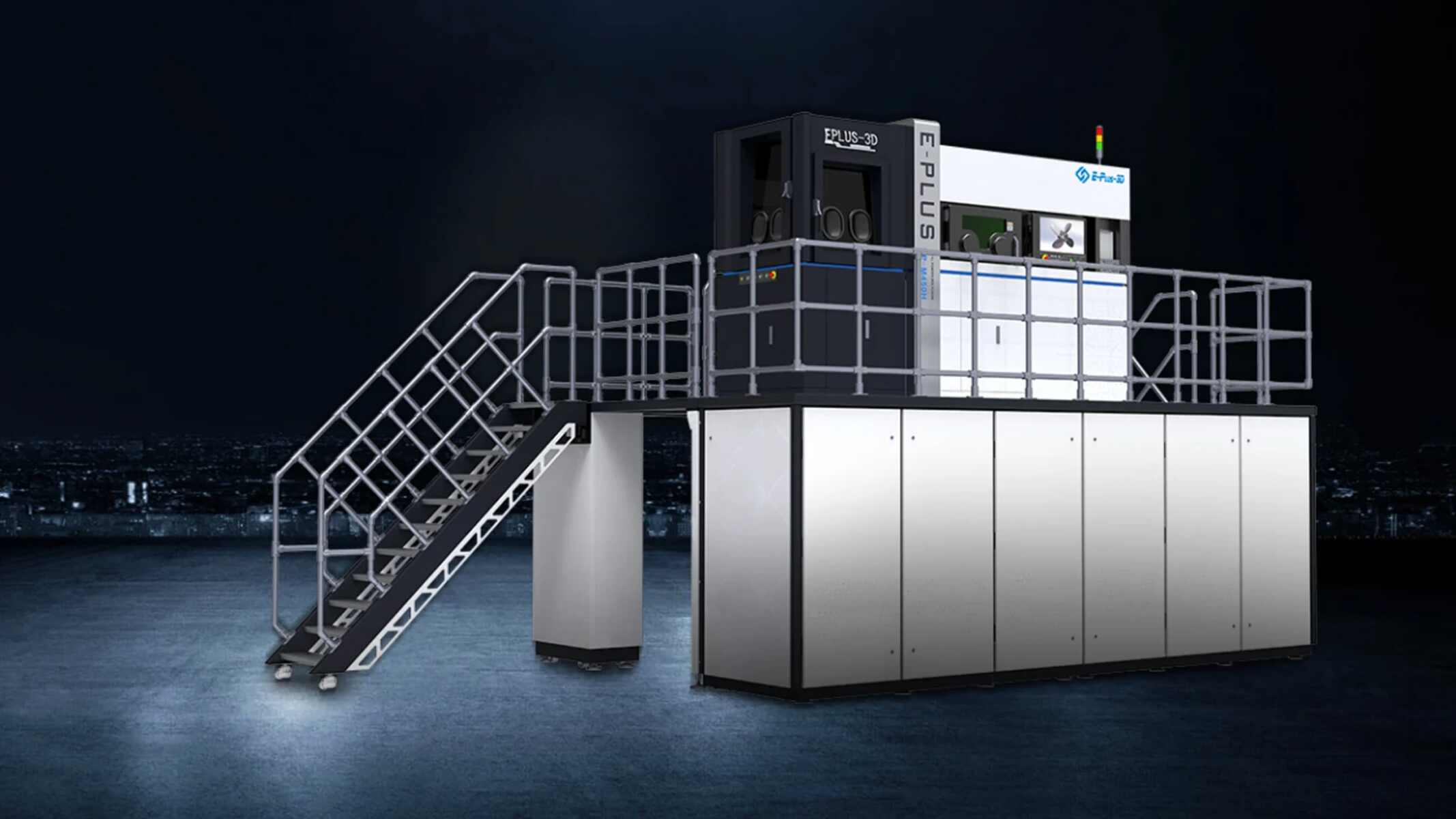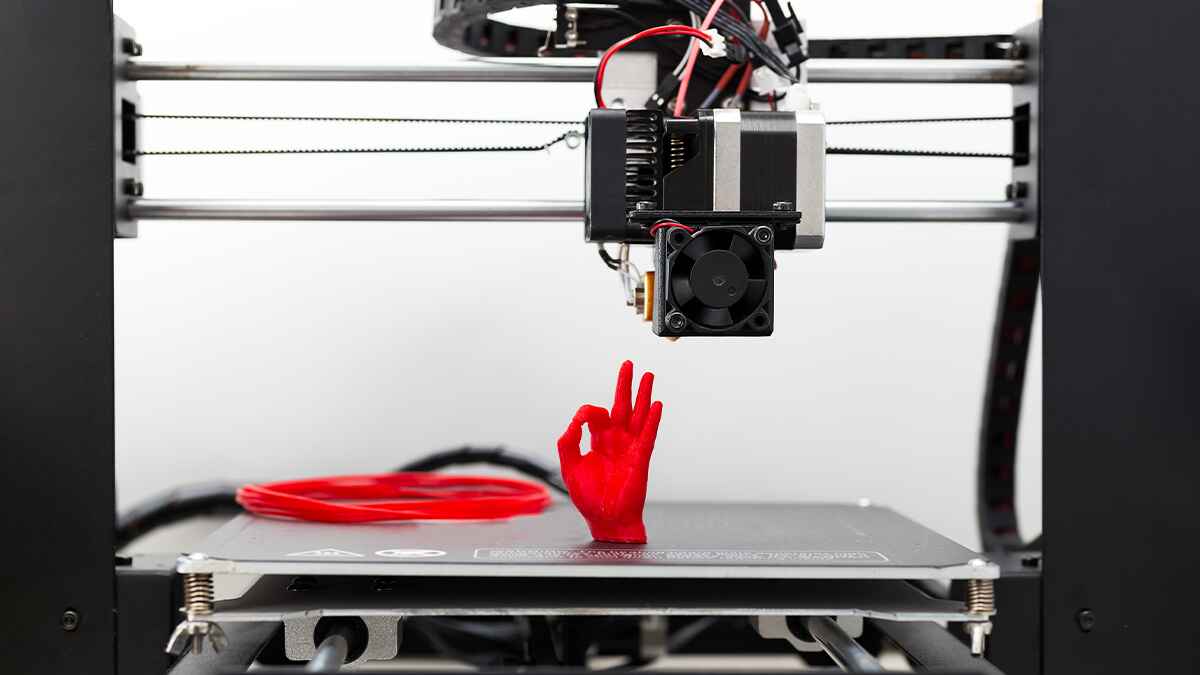Introduction
Welcome to the world of 3D printing, where the possibilities are limitless! Have you ever wanted to replicate a plastic part but didn’t know where to start? Well, you’re in luck because in this guide, we will walk you through the steps to replicate a plastic part using a 3D printer.
Replicating a plastic part can be immensely useful, whether it’s for replacement purposes, prototyping, or simply satisfying your creative curiosity. With a 3D printer, you can recreate an object by scanning and converting it into a digital 3D model, and then printing it layer by layer using various materials.
In this article, we will provide you with a comprehensive overview of the process involved in replicating a plastic part with a 3D printer. From gathering the necessary tools and materials to testing and quality control, this guide will equip you with all the information you need to bring your replication project to life.
Whether you’re a hobbyist, engineer, or entrepreneur, understanding the steps involved in replicating a plastic part is essential for a successful outcome. It allows you to recreate objects with precision, durability, and cost-effectiveness, all while unleashing your creativity.
If you’re ready to embark on a journey of replicating plastic parts with a 3D printer, let’s dive right into the process and explore the fascinating world of 3D printing!
Understanding the Process
Before diving into the step-by-step process of replicating a plastic part with a 3D printer, it’s crucial to have a good understanding of the overall process. This will help you grasp the concepts and techniques involved, ensuring a smooth replication experience.
The process of replicating a plastic part with a 3D printer typically involves several key steps. First, you’ll need to gather the necessary tools and materials, including a 3D scanner, 3D modeling software, and of course, a 3D printer. These tools will form the foundation of your replication process.
Next, you’ll scan the original plastic part using a 3D scanner. The scanner captures the physical object’s geometry and converts it into a digital 3D model. This step is crucial as it provides the basis for creating an accurate replica.
Once you have the 3D model, you’ll need to prepare it for printing. This involves using 3D modeling software to clean up the model, fix any errors or imperfections, and ensure that it is ready for the printing process. You may need to make adjustments to the model to achieve the desired outcome.
After preparing the 3D model, it’s time to adjust the print settings. This step involves selecting the appropriate printing material, determining the resolution and layer height, adjusting the infill density, and other parameters that will influence the final result. These settings will vary based on the complexity and requirements of the part being replicated.
Once the print settings are finalized, the 3D printer will bring your replicated part to life. Layer by layer, the printer will deposit the printing material based on the instructions from the 3D model. Patience is key during the printing process, as it can take some time depending on the size and intricacy of the part.
After the printing is complete, the next step is finishing and post-processing. This involves removing any support structures, sanding or smoothing rough surfaces, and applying any necessary finishing touches to ensure the replica closely matches the original part in appearance and functionality.
Finally, it’s essential to conduct testing and quality control to verify the accuracy and durability of the replicated part. This may involve fitting the part into its intended application, conducting stress tests, or comparing it to the original part for quality assurance.
By understanding the process involved in replicating a plastic part with a 3D printer, you’ll be well-prepared to embark on your replication journey. In the following steps, we’ll delve deeper into each stage of the process, providing you with invaluable insights and tips for a successful replication experience.
Step 1: Gathering the Necessary Tools and Materials
Before you can begin replicating a plastic part with a 3D printer, it’s important to gather all the essential tools and materials. Having everything you need at your disposal will ensure a smooth and efficient replication process. Here are the key items you’ll need:
- 3D Scanner: A 3D scanner is used to capture the physical object’s geometry and convert it into a digital 3D model. There are various types of 3D scanners available, including handheld scanners and desktop scanners. Choose one that suits your specific needs and budget.
- 3D Modeling Software: To manipulate and prepare the scanned 3D model for printing, you’ll need 3D modeling software. There are many options available, ranging from beginner-friendly software with intuitive interfaces to advanced software with powerful features. Some popular choices include Autodesk Fusion 360, Blender, and SketchUp.
- 3D Printer: Of course, you’ll need a 3D printer to bring your replicated part to life. There are numerous types of 3D printers on the market, including FDM (Fused Deposition Modeling) printers and SLA (Stereolithography) printers. Consider factors such as build volume, printing speed, and material compatibility when choosing a printer that suits your requirements.
- Printing Materials: Different 3D printers support various printing materials, so it’s essential to select the right material for your replication project. PLA (Polylactic Acid), ABS (Acrylonitrile Butadiene Styrene), and PETG (Polyethylene Terephthalate Glycol) are common materials used in 3D printing. Research the properties and suitability of each material to determine which one will best replicate your desired plastic part.
- Additional Tools: Depending on the complexity of your replication project, you may require additional tools such as filament cutters, sandpaper, clamps, or adhesives. These tools will aid in the post-processing and finishing stages of replicating your plastic part.
By gathering all the necessary tools and materials ahead of time, you’ll be well-prepared to embark on the replication process. Ensure that your tools are in working order, and stock up on the appropriate printing materials to avoid any delays or interruptions during the replication project.
Step 2: Scanning the Original Part
Once you have gathered all the necessary tools and materials, the next step in replicating a plastic part with a 3D printer is to scan the original part. The scanning process is crucial as it captures the physical object’s geometry and allows you to create a digital 3D model. Here’s how to scan the original part:
- Prepare the 3D scanner: Set up the 3D scanner according to the manufacturer’s instructions. Ensure that the scanner is properly calibrated for accurate measurements and optimal scanning quality.
- Position the original part: Place the original plastic part on a stable surface. Ensure that it is well-lit and that there are minimal reflections or shadows that could affect the scanning process. Depending on the scanner type, you might need to attach markers or trackers to the part to aid in tracking its movement and capturing accurate data.
- Scan the part: Start the scanning process using the 3D scanner. Move the scanner around the part, capturing different angles and areas. The scanner will capture the surface details and dimensions of the part, creating a point cloud or mesh data of the object. It’s important to capture all the desired features of the part to ensure an accurate replication.
- Review the scan: Once the scanning is complete, review the scan data on the 3D scanner or transfer it to your computer. Check for any areas of the scan that may be incomplete or require additional scanning. Some 3D scanning software allows you to align multiple scans to create a more complete and accurate representation.
- Clean up and refine the 3D model: After reviewing the scan, use 3D modeling software to clean up and refine the 3D model. This may involve removing any unwanted artifacts, closing gaps, or smoothing surfaces. Ensure that the 3D model accurately represents the original part before proceeding.
Scanning the original plastic part is a critical step in the replication process, as it forms the basis of the digital 3D model. Take your time during this step to ensure that the scan captures all the necessary details and dimensions of the part. By following these steps, you’ll be ready to move on to the next stage of replicating the plastic part using a 3D printer.
Step 3: Preparing the 3D Model
After scanning the original plastic part and obtaining the digital 3D model, the next step in replicating the part with a 3D printer is to prepare the model for printing. This step involves cleaning up the 3D model, fixing any imperfections, and ensuring that it is ready for the printing process. Here’s how to prepare the 3D model:
- Import the 3D model: Open the 3D modeling software and import the scanned 3D model into the workspace. Ensure that the scale of the model matches the original part’s dimensions, making any necessary adjustments if required.
- Check for errors: Inspect the 3D model for any errors or imperfections that may have occurred during the scanning process. This can include holes, overlapping surfaces, or stray triangles. Use the 3D modeling software’s tools to repair these issues and create a clean and solid 3D model.
- Optimize the 3D model: Depending on the complexity of the part and the printing capabilities of your 3D printer, you may need to optimize the 3D model. This can involve reducing the number of polygons or simplifying intricate details that may not be accurately reproduced during printing. Strive for a balance between maintaining the fidelity of the original part and ensuring a printable model.
- Add supports (if required): If your part has overhangs or intricate geometries that may not print well without support, consider adding support structures to the 3D model. These supports can be generated within the 3D modeling software or added manually. Supports ensure that the printed part maintains its shape and integrity during the printing process.
- Perform a test print: Before proceeding with the final print, consider performing a test print of a small section or a simplified version of the part. This allows you to assess the quality of the print, check for any potential issues, and make any necessary adjustments to the 3D model or print settings before committing to the full-scale replication.
Preparing the 3D model is a crucial step in ensuring the successful replication of the plastic part. It requires attention to detail and an understanding of the nuances of 3D modeling and printing. By following these steps and diligently preparing the model, you’ll be one step closer to creating an accurate replica of the original plastic part.
Step 4: Adjusting the Print Settings
Once the 3D model of the replicated plastic part is prepared, the next step is to adjust the print settings. These settings will determine how the 3D printer produces the final printed replica. Making the right adjustments ensures optimal print quality, accuracy, and durability. Here’s how to adjust the print settings:
- Select the printing material: Choose the appropriate printing material based on the requirements of the replicated part. Consider factors such as strength, flexibility, temperature resistance, and aesthetic appearance. Different materials may require specific print settings, so ensure that the selected material is compatible with your 3D printer.
- Determine the layer height: The layer height determines the thickness of each layer that the 3D printer will deposit. Finer layer heights result in smoother surfaces but can increase print time. Adjust the layer height based on the desired level of detail and the capabilities of your 3D printer.
- Adjust the infill density: The infill density refers to the internal structure of the printed part. It affects the strength and weight of the part. Increase the infill density for parts that require more strength or decrease it for parts that are not heavily stressed. A lower infill density will also reduce material usage and print time.
- Set the print speed: The print speed affects the time it takes to complete the print. Higher print speeds can reduce print time but may sacrifice print quality. Adjust the print speed based on the complexity of the part, the desired level of detail, and the capabilities of your 3D printer.
- Configure support settings: If you added support structures to your 3D model in the previous step, configure the support settings in the slicer software. Set the density, type, and placement of the supports based on the part’s geometry and overhangs. Ensure that the supports are easily removable without damaging the printed part.
- Preview the print layers: Utilize the preview feature in the slicer software to visualize how the layers will be printed. This allows you to identify any potential issues, such as gaps, overhangs, or areas of low adhesion. Make any necessary adjustments to fine-tune the print settings before initiating the printing process.
Adjusting the print settings is crucial for achieving the desired outcome when replicating a plastic part with a 3D printer. Take the time to experiment with different settings and optimize them for your specific replication project. By doing so, you’ll ensure that the printed replica closely matches the original part in quality, accuracy, and functionality.
Step 5: Printing the Replicated Part
With the 3D model prepared and the print settings adjusted, it’s time to proceed to the exciting step of printing the replicated part. This step involves transferring the digital 3D model to the 3D printer and initiating the printing process. Here’s how to print the replicated part:
- Prepare the 3D printer: Ensure that the 3D printer is properly set up, leveled, and in good working condition. Check that the print bed is clean and free from any debris or residue that could affect adhesion during printing.
- Transfer the 3D model to the printer: Use the slicing software to generate the G-code file, which contains the instructions for the 3D printer to follow. Transfer the G-code file to the printer either via USB or an SD card, depending on the printer’s capabilities.
- Initiate the printing process: Start the printing process on the 3D printer’s control panel or through the connected computer. Monitor the printer during the initial layers to ensure proper adhesion and filament flow. Make any adjustments if necessary.
- Monitor the printing process: Throughout the printing process, monitor the printer to identify any potential issues such as filament jams or layer shifting. Keep a close eye on the print progress to ensure everything is running smoothly.
- Allow the print to complete: Depending on the size and complexity of the replicated part, the printing process may take several hours or even days. Be patient and allow the printer to complete the print without interruption.
- Remove the printed part: Once the printing is complete, carefully remove the printed part from the print bed. Use caution to avoid damaging or deforming the part during removal.
Printing the replicated part is both exciting and gratifying, as you witness the digital model transform into a physical object layer by layer. During the printing process, it’s important to remain vigilant and address any issues that may arise promptly. By following these steps, you’ll be well on your way to holding the replicated plastic part in your hands.
Step 6: Finishing and Post-Processing
After the replicated part has finished printing, the next step is to perform finishing and post-processing to ensure the final result is as close to the original part as possible. This step involves cleaning, refining, and adding any necessary finishing touches to the printed replica. Here’s how to finish and post-process the replicated part:
- Remove any support structures: If you included support structures during the printing process, carefully remove them using pliers, cutters, or other suitable tools. Take care not to damage or deform the printed part while removing the supports.
- Sand or file rough surfaces: Inspect the printed part for any rough surfaces or imperfections. Use sandpaper or a file to smooth out these areas, working gradually from coarse to finer grits. This will help achieve a more polished and professional-looking finish.
- Apply surface treatments: Depending on the desired aesthetics and functionality of the replicated part, consider applying surface treatments such as painting, priming, or applying a protective coating. This can help enhance the visual appeal and durability of the part.
- Assemble the replicated part: If your replicated part consists of multiple components, carefully assemble them together using adhesives, screws, or other appropriate methods. Ensure that the parts fit securely and correctly in their intended positions.
- Test the functionality: Once the finishing and post-processing steps are complete, test the functionality of the replicated part. Fit it into its intended application or conduct any necessary tests to ensure that it performs as expected.
- Make further adjustments if needed: During the functionality testing, if you notice any issues or areas that require improvement, make further adjustments to the replicated part. This can involve revisiting the 3D model, print settings, or even redoing certain steps of the replication process to achieve the desired result.
Finishing and post-processing play a crucial role in bringing the replicated part to its final form. Careful attention to detail and patience during this step will help ensure that the replica closely matches the original part in both appearance and functionality. By following these steps, you’ll be on your way to achieving an exceptional final result.
Step 7: Testing and Quality Control
The final step in replicating a plastic part with a 3D printer is to perform testing and quality control. This step involves assessing the accuracy, durability, and functionality of the replicated part to ensure it meets the required standards. Here’s how to conduct testing and quality control:
- Compare to the original part: Carefully compare the replicated part to the original part in terms of size, shape, and overall appearance. Look for any discrepancies or deviations that may indicate a lack of accuracy in the replication process.
- Verify functionality: Test the replicated part’s functionality by fitting it into its intended application or conducting relevant tests. Ensure that it performs the desired functions and meets the required performance standards.
- Conduct stress tests (if necessary): If the replicated part will be subjected to stress, strain, or load-bearing conditions, consider conducting stress tests. This can involve applying forces or weights to the part to assess its strength and durability. Identify any potential weak points or areas that require reinforcement.
- Assess structural integrity: Inspect the replicated part for any signs of structural weakness, such as warping, cracking, or deformation. Pay close attention to critical areas where the part may be subjected to significant stress or strain.
- Evaluate surface finish: Assess the surface finish of the replicated part for any imperfections, roughness, or blemishes that may affect the overall appearance or functionality. Consider additional post-processing steps to improve the surface quality if required.
- Ensure dimensional accuracy: Measure the replicated part using calipers or other measuring tools to determine its dimensional accuracy. Compare the measurements to the specifications of the original part to identify any variations or discrepancies.
- Seek feedback: If applicable, seek feedback from others, such as colleagues, experts, or end-users who are familiar with the original part. Gather their opinions and insights to gain a comprehensive assessment of the replicated part’s quality and performance.
Testing and quality control are essential steps in ensuring that the replicated plastic part meets the required standards. By carefully evaluating functionality, structural integrity, dimensional accuracy, and surface finish, you can identify any areas that require improvement or further refinement. Regular testing and quality control measures will contribute to consistently high-quality replication results.
Conclusion
Replicating a plastic part with a 3D printer is an exciting and rewarding process that allows you to recreate objects with precision and creativity. By following the step-by-step process outlined in this guide, you can successfully replicate a plastic part using a 3D printer.
The journey begins with gathering the necessary tools and materials, including a 3D scanner, 3D modeling software, and a 3D printer. Scanning the original part and preparing the 3D model are crucial steps that ensure accuracy and fidelity in the replication process.
Adjusting the print settings, such as choosing the right printing material and optimizing the infill density and layer height, allows you to achieve the desired quality and functionality of the replicated part. With the settings in place, you can initiate the printing process and witness the digital model come to life in a physical form.
Finishing and post-processing steps, including removing supports, sanding rough surfaces, and applying surface treatments, enhance the visual appeal and refine the replicated part. Testing and quality control play a vital role in assessing the accuracy, durability, and functionality of the replicated part.
Throughout the entire process, attention to detail, patience, and a willingness to learn and adapt are essential qualities. Keep in mind that replication may require adjustments and refinements along the way to achieve the desired outcome.
By following the steps in this guide, you are well-equipped to embark on your own replication journey. So gather your tools, select your plastic part, and let the 3D printer bring your replication project to life. Unleash your creativity, explore the possibilities, and enjoy the satisfaction of replicating a plastic part with a 3D printer!







